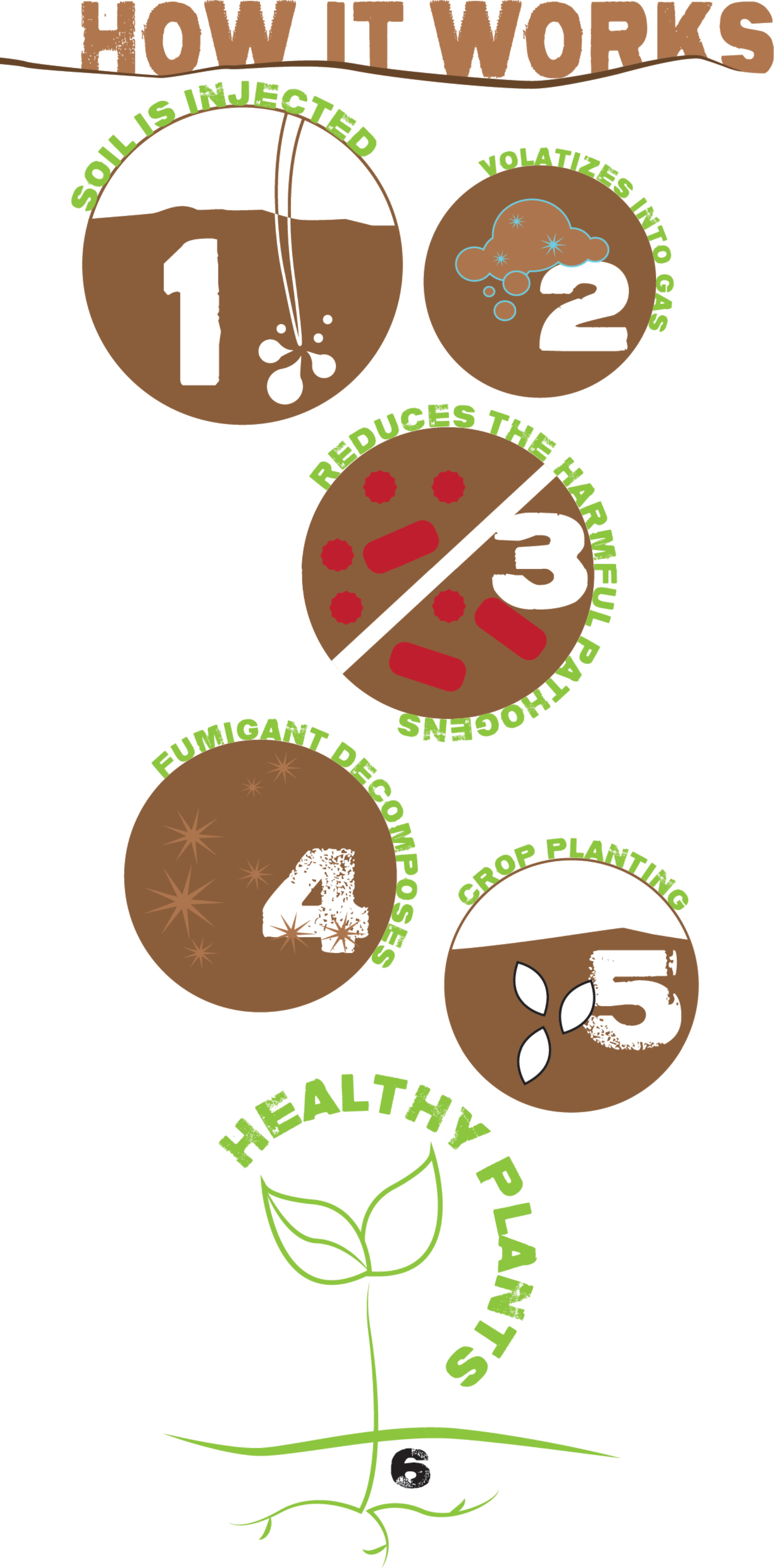Healthy fields. Healthy yields
Planting in soil affected by destructive pests such as nematodes, fungi, insects, weeds, and other pathogens can be devastating to a crop. Many common soil-borne issues can be controlled with fumigation in order to achieve greater, higher-quality yields.
A basic overview of how disinfestation conditions the soil for planting and optimum plant health.
- Step 1: Soil Is Injected
Fumigants are injected as liquids into the soil to control harmful insects, nematodes, weeds, bacteria, fungi, and diseases that have invaded a field. - Step 2: Volatizes Into Gas
The fumigant volatizes into gas diffusing through the soil air space, radiating out from the point of injection. - Step 3: Reduces The Harmful Pathogens
The treatment significantly reduces the harmful pathogens and rebalances the native beneficial soil microbe population, conditioning it for planting. - Step 4: Fumigant Decomposes
The fumigant decomposes rapidly in the soil; and some fumigants, like Chloropicrin, actually biodegrade into plant nutrients. - Step 5: Crop Planting
Crop planting takes place in the newly conditioned soil. - Step 6: Healthy Plants
Healthy plants are able to maximise their water and nutrient use and grow to full yield potential with no uptake of fumigant into the plan root or residue on the plant.


